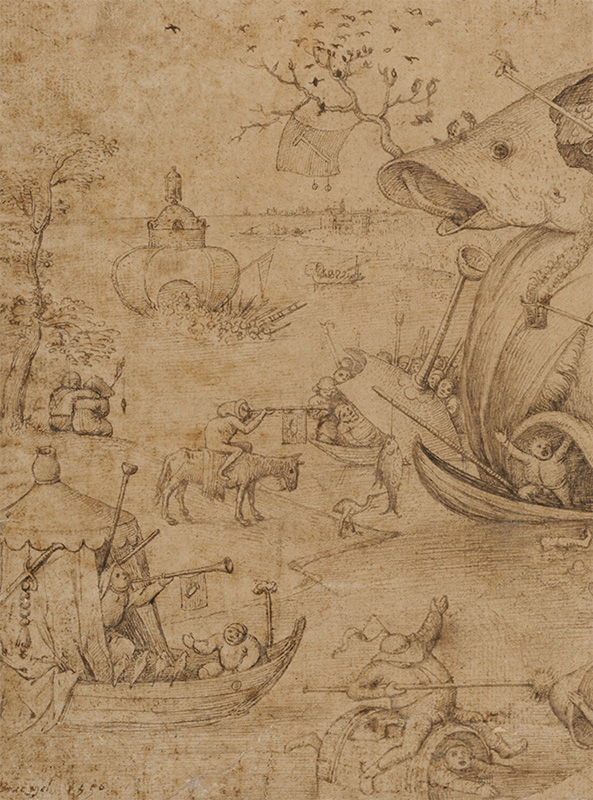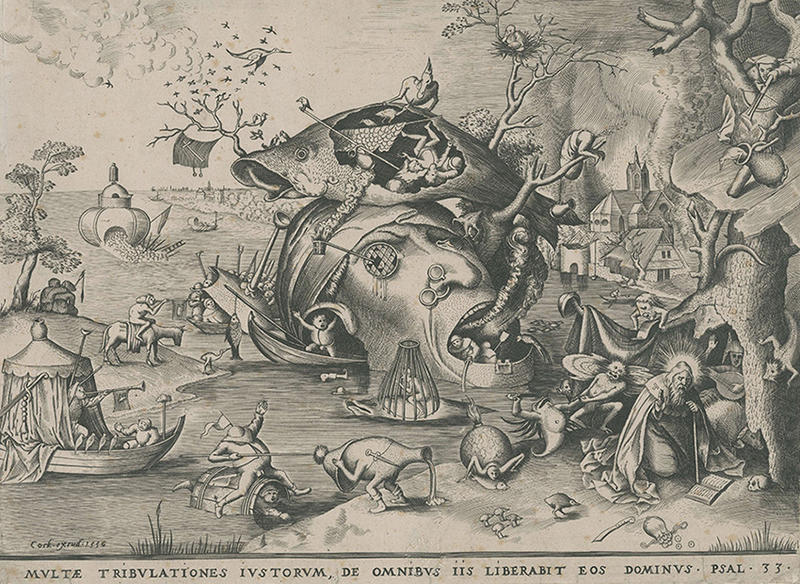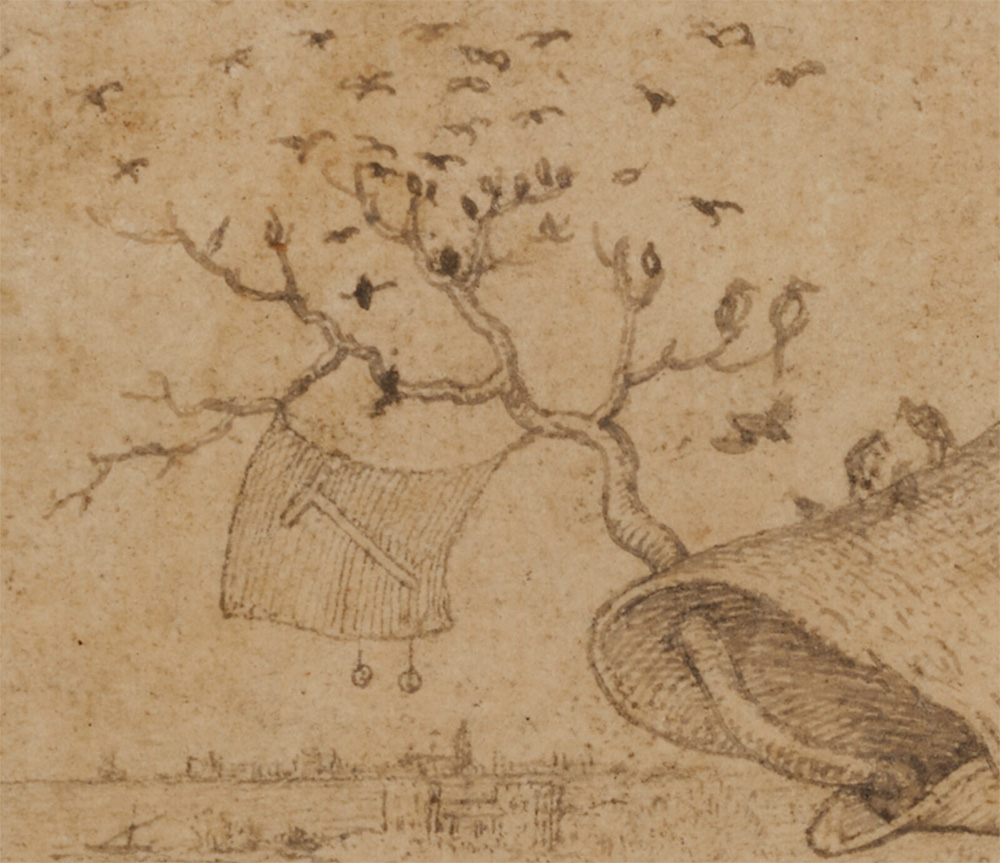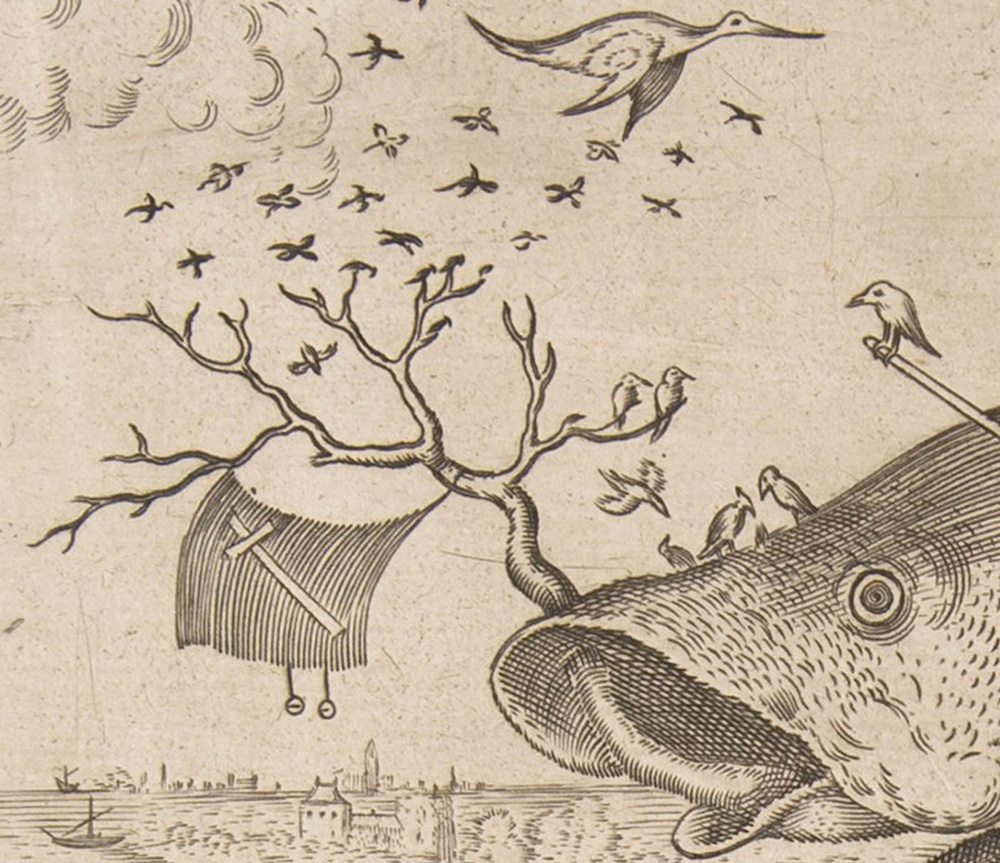The Boschian theme was popular amongst artists of the 16th century, because it gave free reign to their creativity. For Bruegel, it allowed him to invent a whole horde of creatures which, in typical Flemish fashion, are equal parts grotesque and comical.
Perhaps more intriguing, however, are the human figures to the left of the drawing, who appear to bumble and vainly battle the apocalyptic invasion.
Allusions to human sins and frailties abound, and it can be argued that Bruegel intended to criticise the corruption of the Catholic Church or make a broader statement concerning the foolishness of society. In a world of temptation, St Anthony serves as the shining example.
Eagle-eyed visitors may be able to notice differences in the details between the initial design drawing and the print.
For instance, the small creature in the lower right-hand corner is now accompanied by a brood of younglings, rather than a backend protuberance.
St Anthony’s resistance to earthly temptations is more keenly portrayed in the engraving, through his seeming ambivalence to an overturned bag of gold.
The appearance in the drawing of St Anthony’s crutch on a flag, projecting from the fish’s mouth, has also been changed (perhaps by the engraver, see below) into the more commonly seen Latin cross.
More differences between the original design and the final print can be seen throughout the composition, such as the monster in the cage in front of the large fish.








